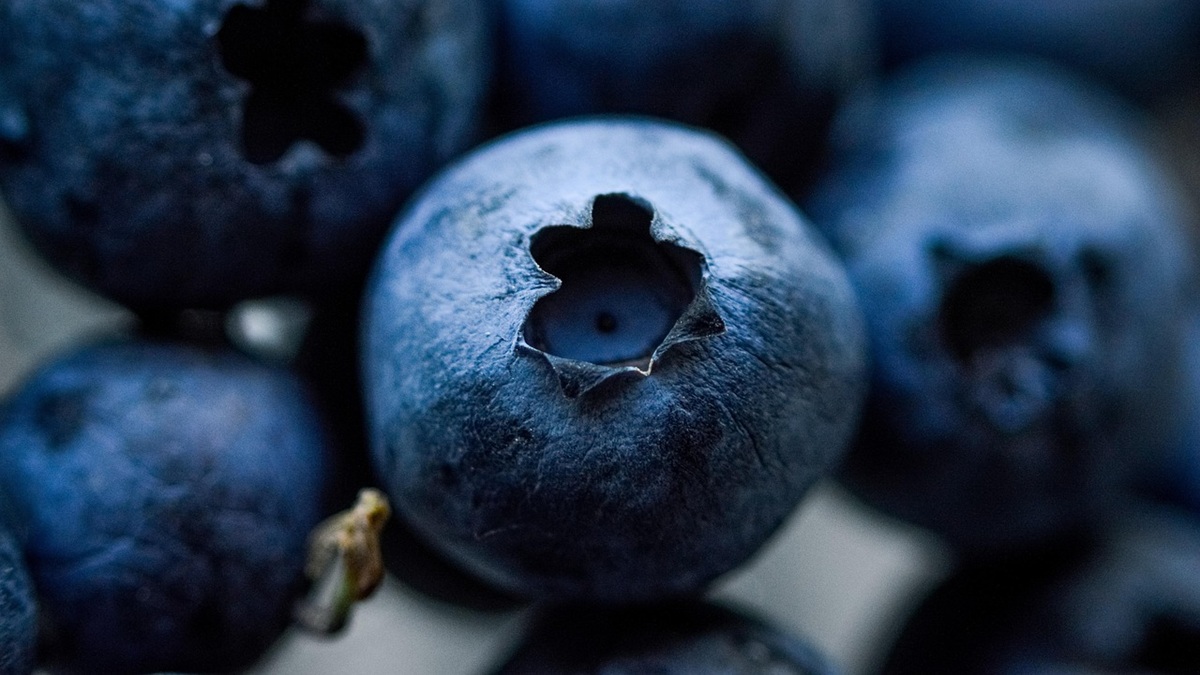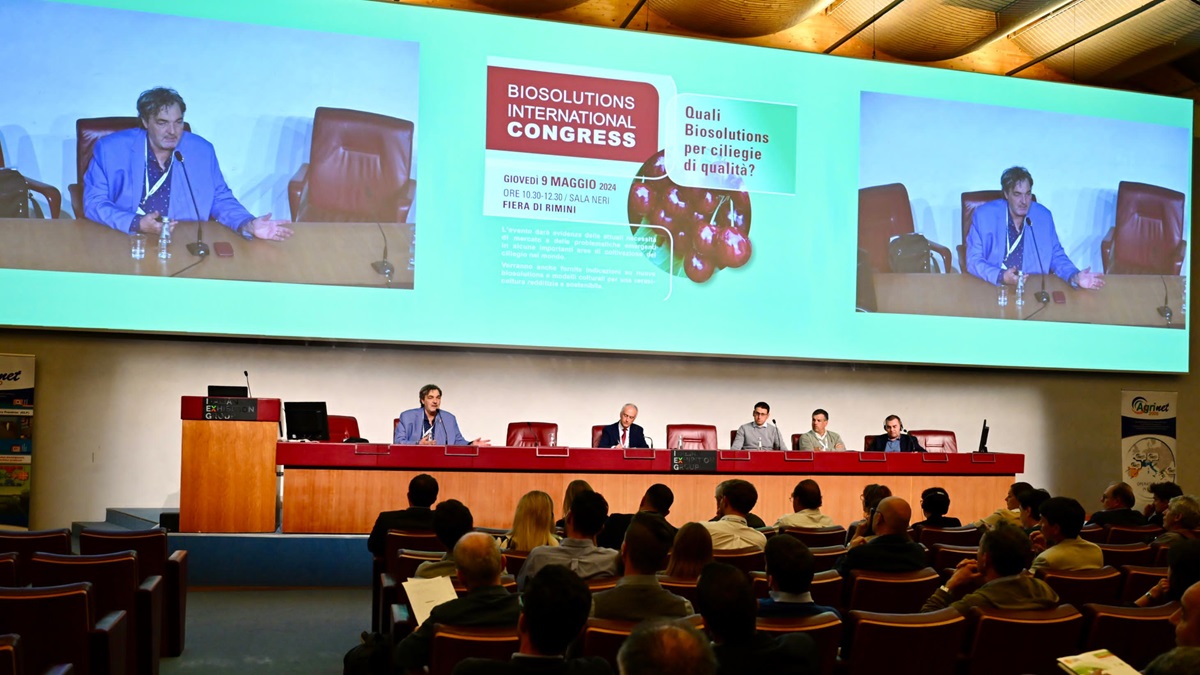Services
International Blueberry Days, the current scenario and future outlook for blueberries
Blueberries took centre stage at Macfrut - Fruit & Veg Professional Show, the three-day international trade fair for the fresh produce sector held at the Rimini Expo Centre, with packed halls. A big part of the International Blueberry Days was dedicated to global players, represented by leading companies from the world?s main production and marketing areas. Globally, blueberries have a number of strengths, which underpin the positive outlook for this fruit in terms of production and consumption trends, availability throughout the year, and innovative packaging and marketing to offer consumers new purchasing opportunities and premium product lines. Peru kicked off the first day with a focus on production estimates: in the last five years, production has increased from 43,000 tonnes in 2016 to 277,000 tonnes in 2022 and is set to double in the next five years. John Early of Agrovision says that Peru is expanding into Asian markets in particular, especially China: in 2022, more than 1,400 containers were shipped by the top three exporters alone. Variety renewal is an issue affecting both Peru and Chile, which is rethinking its blueberry production and export strategies in order to tackle new challenges. Orieta Ramirez of Frusan pointed out that the most critical issues are ?logistics, labour shortage, climate change and genetic improvement; moreover, new producer countries such as Peru and Mexico in particular, but also Morocco and China, are rapidly eating into the market share of Chilean blueberries globally and this is prompting Chile to pursue new diversification strategies?. In the 2022-2023 season, the amount of exported fresh Chilean blueberries is expected to drop by 20%, from 110,000 tonnes to 87,000 tonnes. Nader Musleh of California Giant Berry Farms gave an insight into the US market: with a market penetration rate of 45% and a sales volume of almost $2 billion, blueberries are the seventh most popular fruit among Americans. In fact, 41% of US consumers said that blueberries are their favourite fruit. Justin Mudge of Chiltern Farms explained the challenges facing blueberry growers in South Africa: following an increase in average production over the last three years, with more than 3,000 hectares cultivated with blueberries and 24,000 tonnes exported in 2022, current costs and prices are putting the industry under considerable pressure. While prices dropped by 23% between 2020 and 2021, costs spiked by 51%, resulting in a general loss of profitability that is making the entire sector rethink its sustainability strategy, which is based on quality production and draws on nearly 100 years of experience in fruit and vegetable exports. Dominika Kozarzewska shared the results of the promotional campaign dedicated to these small fruits that was implemented in Poland, where the entire supply chain has come together to educate consumers about the benefits of blueberries. In Poland, which has been producing blueberries for close to 50 years, imports have increased more rapidly than production and exports, making it one of Europe?s most dynamic markets. In fact, blueberry imports have increased by 44%, from 9,910 tonnes in 2020 to 14,250 tonnes in 2021, and four out of five Polish households now buy blueberries throughout the year. Global players in the blueberry supply chain agree that sustainable development will only be possible if it is based on quality, a goal that all those involved are striving towards: from breeders seeking to develop new varieties to the entire production chain as well as marketing and retail. As consumers worldwide continue to show their love for blueberries, it is now up to the industry to prove that blueberries can be supplied all year round and live up to consumers? expectations with regard to taste, crispness, visual appearance and wholesomeness. Stefano Predieri of the CNR-IBE (National Research Council of Italy - Institute for BioEconomy) of Bologna said: ?Consumers are our greatest allies when it comes to understanding and developing sustainable high-quality production that can meet expectations over time. Today, consumers visiting Macfrut took part in a guided taste test of innovative blueberry cultivars. Under the guidance of a team of eight sensory analysis experts from the CNR, they rated the taste and visual appearance of blueberries, which should not only look perfect on the outside, but also leave a satisfying taste in the mouth.? As the co-organiser of International Blueberry Days Thomas Drahorad explains, ?when it comes to blueberries, Macfrut is once again proving to be a knowledge and innovation hub and a driving force for development, supporting a sector that is expanding rapidly globally.?
16 May, 2023
Blueberries took centre stage at Macfrut - Fruit & Veg Professional Show, the three-day international trade fair for the fresh produce sector held at the Rimini Expo Centre, with packed halls. A big part of the International Blueberry Days was dedicated to global players, represented by leading companies from the worlds main production and marketing areas. Globally, blueberries have a number of strengths, which underpin the positive outlook for this fruit in terms of production and consumption trends, availability throughout the year, and innovative packaging and marketing to offer consumers new purchasing opportunities and premium product lines. Peru kicked off the first day with a focus on production estimates: in the last five years, production has increased from 43,000 tonnes in 2016 to 277,000 tonnes in 2022 and is set to double in the next five years. John Early of Agrovision says that Peru is expanding into Asian markets in particular, especially China: in 2022, more than 1,400 containers were shipped by the top three exporters alone. Variety renewal is an issue affecting both Peru and Chile, which is rethinking its blueberry production and export strategies in order to tackle new challenges. Orieta Ramirez of Frusan pointed out that the most critical issues are logistics, labour shortage, climate change and genetic improvement; moreover, new producer countries such as Peru and Mexico in particular, but also Morocco and China, are rapidly eating into the market share of Chilean blueberries globally and this is prompting Chile to pursue new diversification strategies. In the 2022-2023 season, the amount of exported fresh Chilean blueberries is expected to drop by 20%, from 110,000 tonnes to 87,000 tonnes. Nader Musleh of California Giant Berry Farms gave an insight into the US market: with a market penetration rate of 45% and a sales volume of almost $2 billion, blueberries are the seventh most popular fruit among Americans. In fact, 41% of US consumers said that blueberries are their favourite fruit. Justin Mudge of Chiltern Farms explained the challenges facing blueberry growers in South Africa: following an increase in average production over the last three years, with more than 3,000 hectares cultivated with blueberries and 24,000 tonnes exported in 2022, current costs and prices are putting the industry under considerable pressure. While prices dropped by 23% between 2020 and 2021, costs spiked by 51%, resulting in a general loss of profitability that is making the entire sector rethink its sustainability strategy, which is based on quality production and draws on nearly 100 years of experience in fruit and vegetable exports. Dominika Kozarzewska shared the results of the promotional campaign dedicated to these small fruits that was implemented in Poland, where the entire supply chain has come together to educate consumers about the benefits of blueberries. In Poland, which has been producing blueberries for close to 50 years, imports have increased more rapidly than production and exports, making it one of Europes most dynamic markets. In fact, blueberry imports have increased by 44%, from 9,910 tonnes in 2020 to 14,250 tonnes in 2021, and four out of five Polish households now buy blueberries throughout the year. Global players in the blueberry supply chain agree that sustainable development will only be possible if it is based on quality, a goal that all those involved are striving towards: from breeders seeking to develop new varieties to the entire production chain as well as marketing and retail. As consumers worldwide continue to show their love for blueberries, it is now up to the industry to prove that blueberries can be supplied all year round and live up to consumers expectations with regard to taste, crispness, visual appearance and wholesomeness. Stefano Predieri of the CNR-IBE (National Research Council of Italy - Institute for BioEconomy) of Bologna said: Consumers are our greatest allies when it comes to understanding and developing sustainable high-quality production that can meet expectations over time. Today, consumers visiting Macfrut took part in a guided taste test of innovative blueberry cultivars. Under the guidance of a team of eight sensory analysis experts from the CNR, they rated the taste and visual appearance of blueberries, which should not only look perfect on the outside, but also leave a satisfying taste in the mouth. As the co-organiser of International Blueberry Days Thomas Drahorad explains, when it comes to blueberries, Macfrut is once again proving to be a knowledge and innovation hub and a driving force for development, supporting a sector that is expanding rapidly globally.











